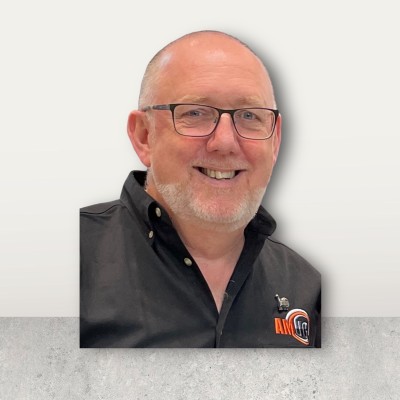
Title: Using 3D printing for restoration and reproducing obsolete components.
Plenary Presentation
Mr. Andrew Allshorn
Owner - Technical Director at 3D-Squared Ltd, UK
Abstract
Restoration and reproducing obsolete or hard to locate components is nothing new. However, 3D Printing has become a tool which when used correctly, it enables this sector in ways that have not been possible before. This presentation will introduce several projects where this has been done and will explain how our AM expertise and techniques could assist you with your application.
Biography
Andrew studied Art and Design at Wolverhampton University, worked as a traditional model maker and in 1993 started his AM career at Liverpool University. He became 3D Systems senior Applications Engineer, introducing AM to various industries globally. Since 2007, he’s run his own businesses, and has participated in several global events. Andrew’s AM global contribution was rewarded in 2016 with an exclusive AMUG DINO Award. He was the European and then Global Ambassador for AMUG before becoming AMUG Vice President from 2019 to 2021. He sits on the AMUK Steering Board, is a member of the Woman in 3D Printing Advisory Board, sits on the TCT Expert Advisory Board and is a Create Education Ambassador. He continues to push the boundaries of AM.
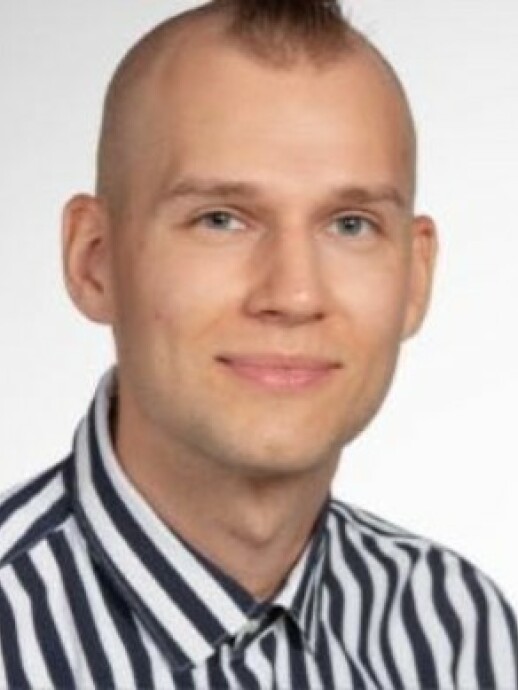
Title: Integrating advanced manufacturing and product development to the metaverse
Speaker Presentation
Mr. Janne Heilala
Mechanical and Materials Engineering, Faculty of Technology, University of Turku
Abstract
As the aerospace sector witnesses the dawn of a transformative chapter in the Industrial Revolution, additive manufacturing stands at the forefront, driving substantial innovations. This transformative technology enables lighter, stronger metal components, redefining aerospace manufacturing. With the introduction of the reconfigurable additive manufacturing standards, a novel framework emerges to standardize a project for blue Earth. In manufacturing, it unlocks vast potential hitherto unexplored. Reconfigurable additive manufacturing connected to additive manufacturing standards does not merely set a new standard for green Earth; reconfigurable additive manufacturing embodies a vision to enhance manufacturing efficiency, reduce costs, and harness the prowess of reconfigurable printing surfaces and advanced 3D printing. Leveraging intricate simulations that span multiple dimensions, less drama is poised to facilitate optimized on-the-fly printing tailored to specific mission parameters, not out of the blue. As reconfigurable additive manufacturing expands, synthesizing innovative technologies and rigorous standards becomes indispensable for innovation.
Biography
Janne Heilala has a solid educational foundation, having, on the one hand, earned a Master of Science in Technology with a distinction in Lifecycle Management in 2019 and, on the other hand, with a supportive Master of Arts 2021 in the University of Tampere, Finland. In 2023, he directed his medical equipment research towards additive manufacturing product simulations in aerospace. With a subdued dedication, he initiated his doctoral studies starting in 2021 at the University of Turku, Finland, targeting the advancement of the manufacturing industry.
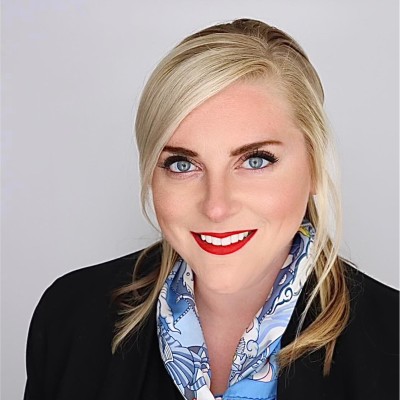
Title: Mayo Clinics Additive Manufacturing Facility: A Case Study in MES Success
Speaker Presentation
Ms. Amy Alexander
Unit head at Mayo Clinic, USA
Abstract
Mayo Clinic’s Division of Engineering (DOE) has a long history of innovation in medical device design and manufacturing, dating back to the establishment of its Instrument Shop in 1915. In 2006, Mayo Clinic began using additive manufacturing (AM), to assist physicians on clinical cases. The DOE's first additive machine was purchased in 2007, and today the Additive Manufacturing Facility (AMF) owns a number of printers for both polymer and metal fabrication. The AMF is run by Mechanical Engineering Design Technicians and its capabilities are utilized broadly by engineers and designers alike. Fabrication requests are organized using a Manufacturing Execution System (MES), which is paramount to the successful operation and reporting on all AM work. In the context of medical device development work, the system can be used to manage the inventory of raw materials and finished goods, schedule print jobs, track the progress of print jobs, monitor the performance of machines, and generate reports on production and quality.
DOEs MES plays a critical role in the successful operation of its AMF. The system is used to manage all aspects of the AM process, from scheduling print jobs to tracking the progress and delivery of those jobs. This allows the AMF to ensure that all requests are completed on time and to a high standard of quality. Mayo Clinic's experience with an MES demonstrates the value of these systems for AM, namely increased throughput, improved quality, reduced costs, and increased visibility into the additive manufacturing process.
Biography
Amy Alexander is Unit Head of Mechanical Development and Applied Computational Engineering within the Division of Engineering at Mayo Clinic. In this role, she helps to bridge engineering capabilities with the clinical practice and supports a team of designers and engineers. She is past-chair of the Society of Manufacturing Engineers’ Healthcare Additive Manufacturing Advisory Board, a member of the Radiological Society of North America’s 3D Printing Special Interest Group, and frequent co-author and reviewer of medical 3D printing papers. She holds a B.S. in Biomedical Engineering, an M.S. in Engineering Management, and multiple certifications in Additive Manufacturing.
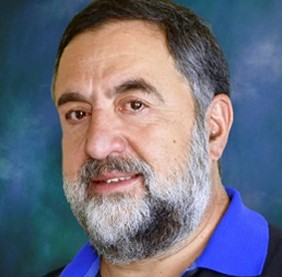
Title: Designing patient specific orthopedic implants
Plenary Presentation
Dr. Andreas Vlahinos
CTO of Advanced Engineering Solutions, USA
Abstract
Additive Manufacturing of patient-specific metal implants can provide personalized solutions for challenging conditions. The recent advancements in Designing for Additive Manufacturing (DfAM) such as lattice generation features, real-time simulation tools, generative design, and interactive optimization enable designers to rapidly generate designs of patient-specific implants. The clinical process has to be fast but is complicated by regulatory requirements and the interaction of multiple disciplines from radiology to surgery. The radiology produces Digital Imaging and Communications in Medicine (DICOM) files that need to be segmented, visualized in 3D, and converted to faceted models. The surgeon needs to communicate the surgical plan such as slice planes, locking devices, implant type, pore size for osseointegration, overall porosity, material, etc. The designer needs to use the doctor's guidelines, the faceted model, generative design, lattice generation features, structural simulation, and DfAM rules to optimize the implant design. The manufacturer needs to evaluate the design and the suggested print orientation for printability and post-processing. The surgical team needs to evaluate the quality of the implant and practice the surgical plan using the printed implant and its adjacent components. Finally, the surgical team performs the operation. In this presentation, the design process of an award-winning femur implant with gyroid lattices will be demonstrated. The automatic generation of a solid model from the faceted date will be presented. The thickness of the gyroid infill is functionally graded based on the attachment surfaces and the simulation results. The current barriers in the process will also be outlined. The vision of how to overcome these barriers with the use of Artificial Intelligence (AI) in segmentation and Augmented and Virtual reality (AR/VR) in surgical planning will be presented.
Biography
Dr. Andreas Vlahinos is the CTO of Advanced Engineering Solutions. Andreas has concentrated on DfAM, Computer Aided Innovation, Generative Design, Lattice Structures, and Simple Solutions to Complex Problems. He has been instrumental in rapid product development through the implementation of Computer Aided Engineering for several Government agencies such as NASA, NREL, SANDIA, DOE, NCDMM, and US Army Aviation & Missile Command and several industry partners such as SpaceX, Lockheed Martin, General Dynamics, United Launch Alliance, Rafael Defense Systems, NAVISTAR Defense, etc. He has been a Professor of structural engineering at the University of Colorado. Several times he received the Professor of the Year Award. He has received the R&D 100 award and several patents. He received his Ph.D. in Engineering Science and Mechanics from the Georgia Institute of Technology. Finally, he is regularly invited as a keynote speaker and panelist on a variety of subjects (Generative Design, Innovation, DfAM, IoT) at international conferences.
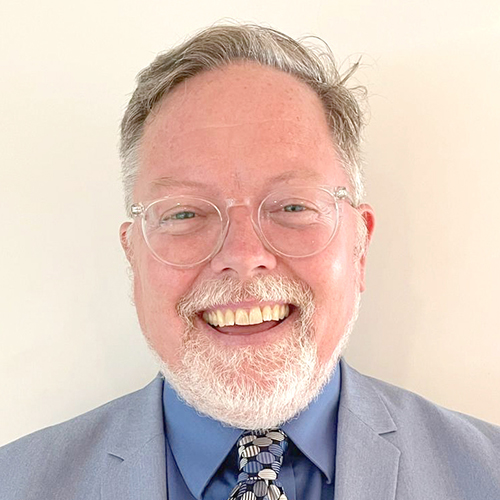
Title: 4D Printed Self-Assembled Materials for Intervertebral Applications
Plenary Presentation
Prof. Thomas J Webster
Hebei University of Technology, USA
Abstract
Over 1.2 million people in the U.S. are projected to suffer from Parkinson’s Disease by 2030. Current therapies on the market offer pharmaceuticals and surgically placed medical devices, such as deep brain stimulators, that only address symptoms of Parkinson’s disease but still have a market valuation of $700 million. Tissue transplantation in patients with Parkinson’s Disease to replace lost dopaminergic neurons of the substantia nigra pars compacta has been studied since the 1980s [1-3]. However, there are many problems with such treatments resulting from inadequate stem cell (specifically, autologous induced pluripotent stem cell (iPSC)) isolation, culture, and insertion procedures, specifically in the implantation of stem cells into patient-derived midbrain dopaminergic progenitor cells. Although such cells can be easily extracted from numerous sources for Parkinson’s Disease treatment, it is the stem cell delivery method that has proven problematic, with only 30% viable after delivery [4]. This is because the stem cells grown in culture before insertion are typically removed from cell culture plates using harsh chemicals (like trypsin) which disrupts cell to cell contacts, reverses intended differentiation, and overall can lead to cell death. Further, stem cells have been shown to migrate away from the areas of the brain in which they were implanted, migrating away from damaged tissue in which they are needed for repair [5]. A biomaterial delivery device and “anchor” for viable stem cells would go a long way in treating numerous neurological diseases, such as Parkinson’s Disease.
Biography
Thomas J. Webster’s (H index: 121; Google Scholar) degrees are in chemical engineering from the University of Pittsburgh (B.S., 1995; USA) and in biomedical engineering from RPI (Ph.D., 2000; USA). He has served as a professor at Purdue (2000-2005), Brown (2005-2012), and Northeastern (2012-2021; serving as Chemical Engineering Department Chair from 2012 - 2019) Universities and has formed over a dozen companies who have numerous FDA approved medical products currently improving human health. He is currently helping those companies and serves as a professor at Hebei University of Technology, Saveetha University, Vellore Institute of Technology, UFPI, and others. Dr. Webster has numerous awards including: 2020, World Top 2% Scientist by Citations (PLOS); 2020, SCOPUS Highly Cited Research (Top 1% Materials Science and Mixed Fields); 2021, Clarivate Top 0.1% Most Influential Researchers (Pharmacology and Toxicology); 2022, Best Materials Science Scientist by Citations (Research.com); and is a fellow of over 8 societies. Prof. Webster is a former President of the U.S. Society For Biomaterials and has over 1,350 publications to his credit with over 53,000 citations. He was recently nominated for the Noble Prize in Chemistry (2023).

Title: Osteointegrative 3D printed scaffolds for cranio/maxillofacial applications by fused deposition modelling
Plenary Presentation
Prof. Ilaria Cacciotti
University of Rome Niccolò Cusano, Italy
Abstract
In the craniomaxillofacial sector, the custom made approach is gaining a lot of interest, mainly by additive manufacturing technologies, allowing to ensure lower infection/inflammation risk, reduced morbidity, shorter surgery times, higher aesthetical results, better correspondence between the produced implant and the graft site [1,2].
In order to overcome the currently evidenced limits, i.e. the post surgery inflammation reaction occurrence and the osteointegration lack [3], graded scaffold were designed, produced by fused deposition modelling (FDM) technique, and properly functionalized.
FDM printing of selected biopolymers (i.e., polylactid acid (PLA), polymethylmethacrylate (PMMA), polycaprolactone (PCL)) was properly set up, in terms of extrusion and bed temperatures, printing speed and flow [4]. Seven different pattern depositions (i.e. Line, Grid, Gyroids, Concentric, Octet, Triangle, Zig-Zag) were tested. The obtained structures were coated with osteonintegrative materials and loaded with suitably selected antibiotic/anti-inflammatory agents. The produced systems were characerised by scanning electron microscopy (SEM), infrared spectroscopy (FTIR/ATR), X-ray diffraction (XRD), release kinetics tests, differential scanning calorimetry (DSC), tensile and compression tests. The cytotoxicity was assessed by MTT assay, and osteoblastic differentiation capability evaluated by in vitro cell tests with preosteoblasts. Functionalised scaffolds were successfully produced by FDM, coated with osteointegrative materials and loaded with antibiotic/anti-inflammatory agents. The efficacy of the coating and loading protocols was validated. The no cytotoxicity of all the studied systems was demonstrated, as well as their capability to promote the osteoblastic differentiation [5].Line pattern provided the best mechanical behavior, whereas the different deposition patterns did not significantly affect the biological responsiveness.
Biography
Ilaria Cacciotti is Full Professor of Biomaterials & Tissue Engineering and Materials Science & Technology at University of Rome "Niccolò Cusano". She graduated in Medical Engineering at the University of Rome “Tor Vergata” (Master of Science Award ‘Fondazione Raeli’), completed the Ph.D in Materials Engineering (Ph.D Thesis Award ‘Marco Ramoni 2011, Ph.D Thesis AIMAT Award 2012) and obtained the II Level Master degrees in “Forensic Genetics” and in "Protection against CBRNe events". She is expert in the synthesis/processing/characterisation of biocompatible nanostructured materials, particularly for applications in the biomedical/environmental/agri-food sectors. She is member of the Editorial Board of several international journals, including Applied Science-MDPI, Applied Surface Science Advances-Elsevier, Frontiers in Biomaterials, Open Journal of Materials Science- Bentham Science. For her research activity, she received more than 20 awards, including the L’ORÉAL-UNESCO Italy for Women and Science 2011
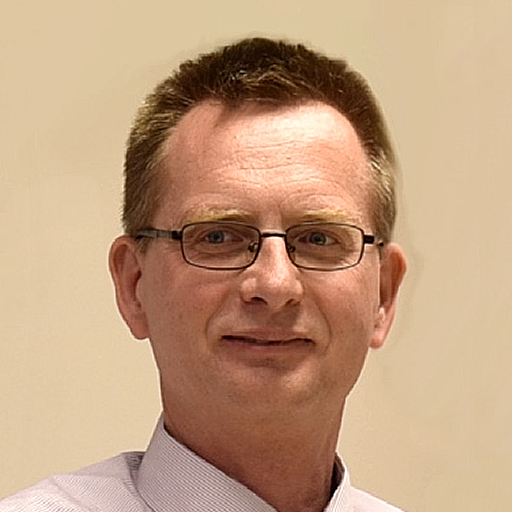
Title: Additive Manufacturing in Spare Parts Management in the Maritime Industry
Keynote Presentation
Prof. Igor Vujovic
University of Split, Croatia
Abstract
Over the last decade, there have been attempts to introduce additive manufacturing into the training of seafarers. At the heart of this was the hope that spare parts would be manufactured on site (on board ships) when there are needed. However, this idea could potentially work in a laboratory environment. In practice, many aspects are not yet covered. For example, vibrations caused by the ship’s engines or the ship’s movements can affect the printed sprat part. If the 3D printing process is successful, the problem of degradation of the material properties and the influence of the aggressive maritime environment arises. This could be exacerbated by additional aggressive materials in the engine room.
Another aspect that has been considered is maritime applications, where there are no problems with vibrations, for example, as is the case with offshore applications. However, 3D printing in this case shortens the supply chain, but the delivery could be almost the same as for regular spare parts.
In conclusion, we point out that all the required properties of filaments must be met in the complex maritime environment and that there is a need for new filaments for these applications.
Biography
Igor Vujović has been working as a Professor (currently), associate professor, and assistant professor at University of Split, Faculty of Maritime Studies, Croatia since 2012. Before this appointment, he was assistant, lecturer, and senior lecturer. Currently, he is a head of PhD Study Technologies in Maritime Affairs, editor-in-chief of Transactions on Maritime Studies, head of SPAADREL. He is/was a member of several TPCs and OCs, and member of several journals boards. He worked or led several projects of various funding. He was advisor of many diploma thesis. He has published 178 scientific papers, textbooks, and teaching materials.
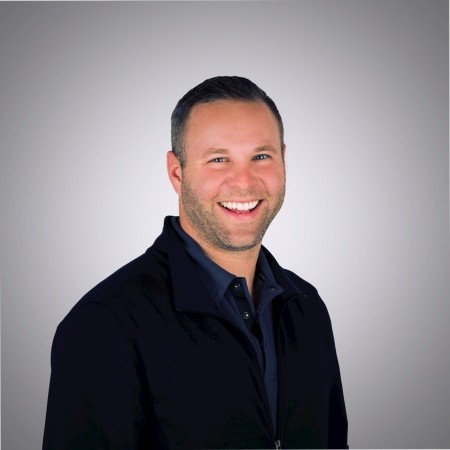
Title: Large format 3d printing applications
Plenary Presentation
Mr. Tim Ruffner
Director of Business Development Caracol AM, USA
Abstract
Will be updated soon…
Biography
Tim Ruffner is currently the director of business development for Caracol Inc (main HQ Italy) out of Austin, Tx. Tim has had the privilege to have his tenor in AM for over 15 years working for such companies as BigRep, Dynamism, Star Prototype as well as helped to take some companies public such as Desktop Metal (DM), Concept Laser (GE) and GPI Prototype (FATH). Tim has knowledge in both metals AM equipment and polymers along with traditional manufacturing methods such as injection molding, cnc machining and castings (urethane, investment, die). Tim has spoken at hundreds of events about how to design additive and traditional manufacturing and educating the industry on applications that suit well for them.
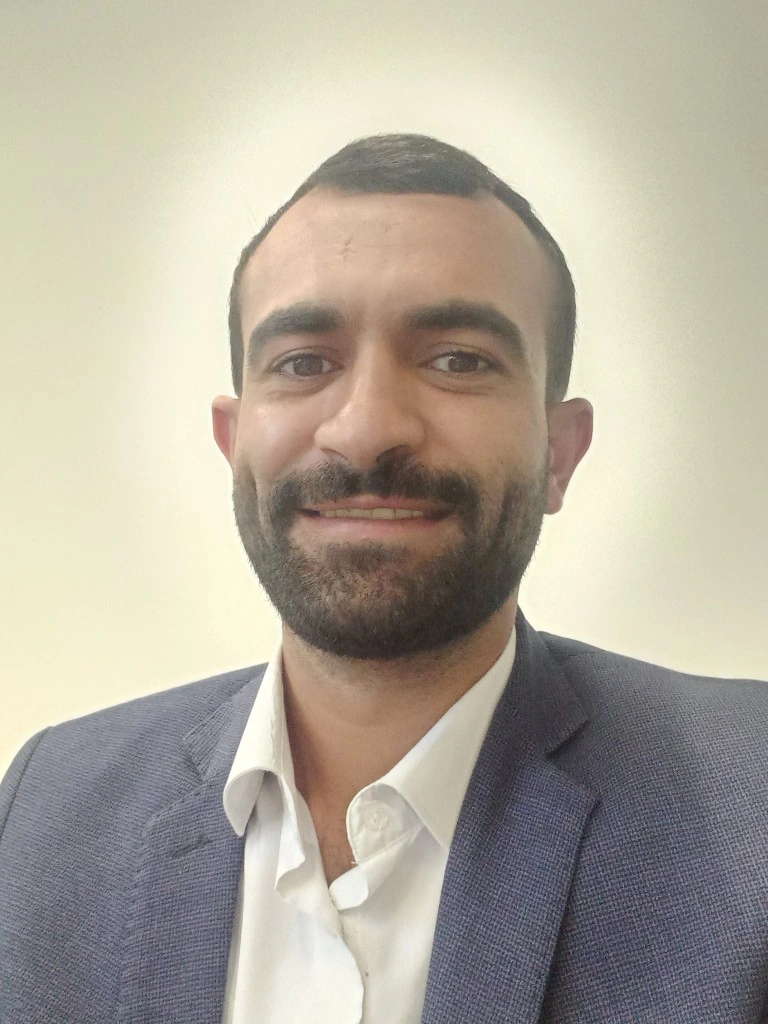
Title: Green peace forests
Speaker Presentation
Mr. Rashed Alsihamat
Power & control Electrical Engineer, Jordan
Abstract
It is an start up to manufacture a new generation of solar cells and panels based on scientific research Solar cells development /Green crystal cells like 512,622 and 850 ,1275 W. Characterized by high efficiency 28% and less space for every solar system and higher productivity of electrical energy comparing to competitors. In future vision of project i aim to complete the research for manufacturing technology and high requirements of production line Finally the standards of nuclear energy station can be improve with this research by more development in solar cells and it's concept and usages
Biography
Eng. Rashed Alsihamat Jordanian electrical engineer graduated from Mutah University with good average, my experience at scientific research ,Solar energy systems and entrepreneurship at this period i work with several institutions and non profit organisations for apply my graduation project Green peace forests and green crystal cells to develop renewable energy sector and give it push with new achievement that will create the world more clean and peace

Title: Study of composite polymer degradation by machine learning approach
Speaker Presentation
Mr. Kheireddin Kadri
Aptiskills & Da Vinci research center, France
Abstract
The high-pressure condition encountered inside hydrogen storage vessel of type 4 [1] imposes to study the degradation of composite material under static pressure. In the present work we expose a promising method. We proposed a coupled approach between finite element method (FEM) and machine learning (ML). The representative volume element (RVE) was used to generate the law behaviour and the damage law [2] as an input data. Algorithms for ML such classification K-nearest neighbours (k-NN) and a special k-NN with dynamic time warping (DTW) [3], were employed to classify the degree of degradation for each RVE. The hierarchical clustering through dendrograms [4] allowed to extract knowledge in term of fiber, matrix properties and fibers’ volume fraction sensitivity to different solicitations. Strain ductile degradation obtained from computation, is forecasted as a time’s series by artificial neural networks [5].
Biography
Kheireddin Kadri has completed his Phd at the Laboratory of Processes and Engineering in Mechanics and Materials (Paris, France) at HESAM University at Paris, France. He has been working as a post-doctoral at De Vinci Research Center Paris, performing his research in the Modeling group laboratory since 2021. His team work research is focusing on multi-scale modelling of composite materials, by applying a new approach based on machine learning and artificial intelligence. He has been serving as jury for the title of Developer in Artificial Intelligence at the French network of digital factories SIMPLON.
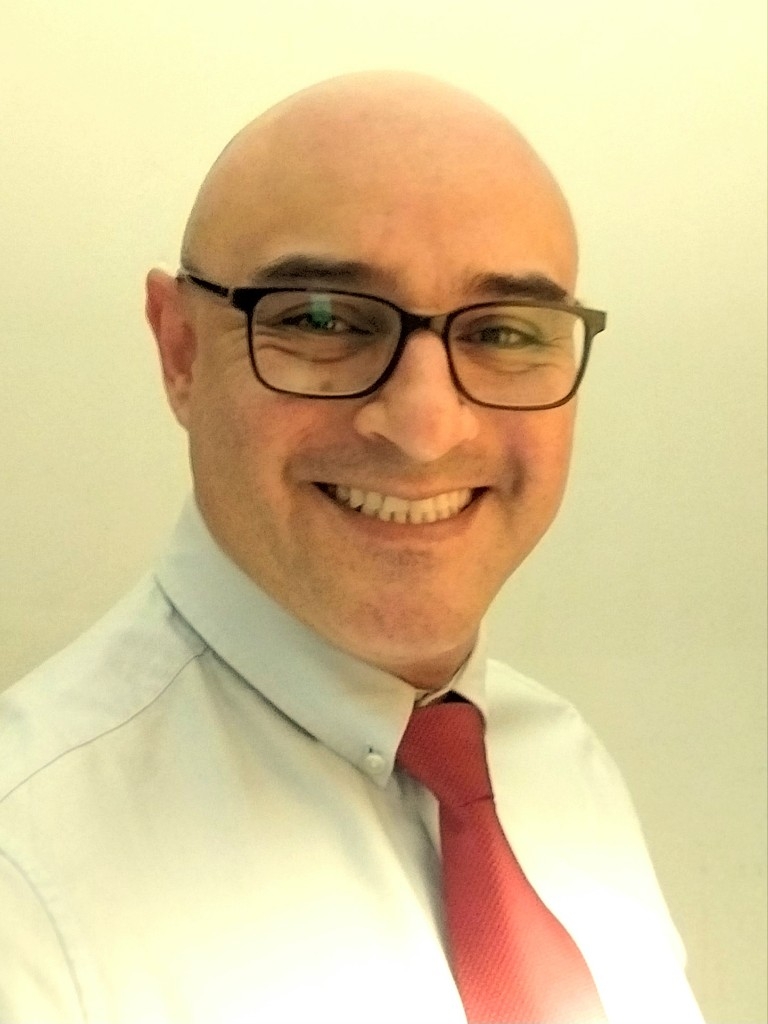
Title: Advancements and challenges in Additive Manufacturing of Magnesium Alloy Medical Implants
Speaker Presentation
Mr. Jose Alberto Bejarano Ulloa
Msc. Pontifical Catholic University of Peru, Peru
Abstract
This presentation focuses on the latest advancements in additive manufacturing techniques for the production of medical implants using magnesium alloys. Magnesium alloys have gained significant attention in the field of implant manufacturing due to their biocompatibility, lightweight nature, and mechanical strength. However, there are challenges that need to be addressed to fully exploit their potential. The first trend discussed is topological optimization, where advanced algorithms are used to design complex implant structures that optimize load distribution and minimize material usage. Integration into the design and manufacturing processes, as well as validation of optimized designs, present challenges in this area. The second trend focuses on enhancing the material properties of magnesium alloys. Precise control of microstructure and composition is vital to improve mechanical strength, biocompatibility, and corrosion resistance. Achieving a balance between these properties while maintaining cost- effective manufacturing techniques poses a challenge. Customized design and fabrication is another important trend, allowing implants to be tailored to fit the unique anatomy of each patient. Optimization of the design process for customization, cost-effectiveness, and regulatory compliance presents challenges in this area. Lastly, the emerging trend of tissue and organ bio- printing using magnesium alloys opens new possibilities in regenerative medicine. Developing bioinks compatible with magnesium alloys and achieving precise bio-printing of complex structures are challenges to be overcome. Addressing these challenges will unlock the full potential of magnesium alloys in medical implant manufacturing. By combining topological optimization, material enhancements, customized design, and tissue bio-printing, we can revolutionize the field, offering personalized implants with improved biocompatibility and functionality.
Biography
Experienced Mechanical Engineer and Machine Design graduate with a passion for materials and welding engineering. Extensive academic and teaching experience in Colombia and Peru, specializing in industrial inspection, supervision, and consultancy. Continuously committed to professional development, participating in international projects such as Research 900 at the Canadian Center for Welding and Joining. Presented at various conferences and seminars in Brazil, Colombia, Peru, Mexico, the Netherlands, and India. Strong belief in the integration of theoretical advancements and practical industry application. Holds a Master's degree in Welding Engineering from the Pontifical Catholic University of Peru (PUCP) and certifications as an International Welding Engineer, European Welding Engineer, and International Coordinator in Metal Additive Manufacturing by the European Welding Federation.
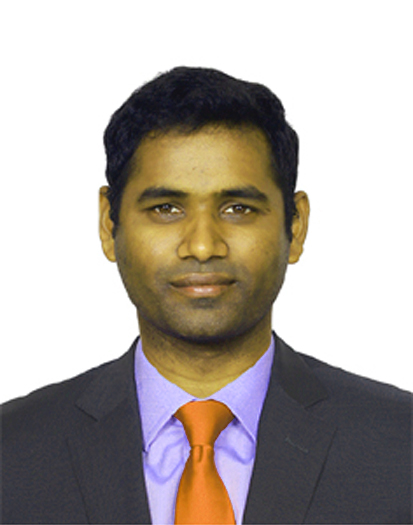
Title: Characteristics of Grain Growth in Additively Manufactured Components
Keynote Presentation
Dr. Murali Mohan Cheepu
Research Manager, South Korea
Abstract
Wire arc additive manufacturing (WAAM) is increasingly gaining favor over other additive manufacturing processes, particularly for producing large-scale components. The microstructural changes during the solidification process in WAAM are influenced by the heat input and layering sequence. In this study, Inconel alloy was utilized for WAAM deposition with various layering sequences using GMAW to investigate their impact on grain growth, microstructure, and mechanical properties. Diverse layering sequences were devised to prevent the formation of columnar grains resulting from oscillation beads and multiple passes in a single layer. The unidirectional heat conduction encourages grain growth from the bottom to the top, connecting grains at fusion boundaries. Nucleation and epitaxial grain growth are likely to occur at the fusion border between the previously solidified bead and liquid metal. Consequently, the transverse columnar grains are influenced by the grain size of the preceding layer. While a traditional stacking sequence in one direction yields columnar grains, a zigzag layering sequence refines grain growth. The zigzag sequence disrupts the heat conduction and grain development direction, resulting in smaller fragmented grains that enhance isotropic characteristics. The anisotropic behavior of additively manufactured deposits is shown to be dependent on grain growth direction and size, influenced by the layering sequence. WAAM deposits with a zigzag layering sequence exhibited superior hardness and tensile strength compared to standard layering methods. Additionally, the zigzag layering sequence enhances the resolution of deposited walls with a linear shape.
Biography
Dr. Murali Mohan Cheepu is a research manager at STARWELDS Inc. He has over ten years of experience in the manufacturing and research industries. His research focuses on welding and joining, additive manufacturing, automation, digitalization and artificial intelligence. In addition, he is doing research on a novel Super-TIG welding process to increase productivity. Cheepu has won a number of awards, such as best researcher award from KWJS, trusted reviewer from the Institute of Physics in the UK, and outstanding young manufacturing engineer award from the SME, USA. He serves on the editorial board, reviewer, conference chair and technical committee member. Cheepu has written several peer-reviewed articles, welding research supplement articles in the American Welding Society and patents. Cheepu has a master's degree in welding engineering from the NIT Tiruchirappalli and a doctorate in mechatronics engineering from Kyungsung University.
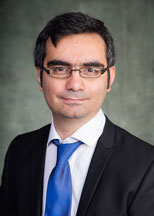
Title: Empowering Health Equity using Additive Manufacturing
Keynote Presentation
Prof. Mohsen Akbari
University of Victoria, Canada
Abstract
Bioprinting merges additive manufacturing and tissue engineering to generate functional tissues and organs. Bioprinting provides remarkable flexibility for depositing cells and bioactive molecules in three-dimensional (3D) space and enables an automated workflow, which reduces manual cell manipulation and increases tissue fabrication scalability for high-throughput drug screening. Bioprinting has evolved significantly over the last decade, with several breakthroughs resulting in improved tissue mimicry and increased cell viability. In this talk, I will discuss recent advances in my lab in this area, focusing on our work in extrusion-based printing of multifunctional constructs with controlled biophysical and biochemical properties. In addition, I'll talk about the viability of using digital light processing bioprinting to increase the manufacturing throughput of engineered skin for transdermal drug transport studies.
Biography
Dr. Mohsen Akbari is an Associate Professor of Mechanical Engineering, the Director of the Laboratory for Innovations in Microengineering (LiME) at the University of Victoria, and Affiliated Associate Professor at the School of Biomedical Engineering at the University of British Columbia. In addition to his professorship, he is a member of the Center for Advanced Materials and Related Technologies (CAMTEC), member of Center for Biomedical Research (CBR), investigator at International Collaboration on Repair Discoveries (ICORD), Associate Member of Djavad Mowafaghian Centre for Brain Health and the co-founder and Chief Scientific Officer at 4M Biotech. Dr. Akbari obtained his Ph.D. from Simon Fraser University and received postdoctoral training at Harvard Medical School and Brigham and Women’s Hospital. He is the recipient of several awards, including the Faculty of Engineering Teaching Excellence Award, Michael Smith Foundation for Health Research Idea to Commercialization Award, NSERC Postdoctoral Fellowship Award, BC Innovation Council Research Award, Kaiser Foundation Award, and recognized as a Canadian Rising Star in Global Health by Grand Challenges Canada. He is a Guest Editor of Micromachines and Gels and a member of the Board of Directors of the Canadian Biomaterials Society. His research findings have been published in 140 peer-reviewed journal papers and book chapters with an h-index of 35 and over 9300 citations. His work has also been featured on the cover of 11 Journals and reported in media such as CBC News, Time Colonist, BBC News, Google News, Science Daily, The Telegraph, and Fortune.
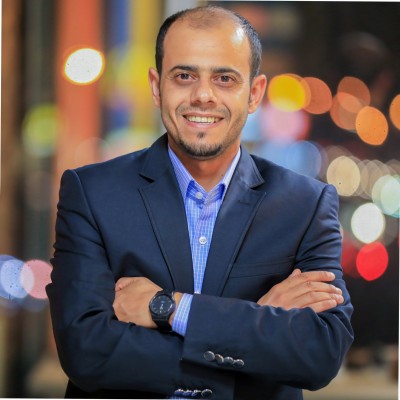
Title: Impact of additive manufacturing technology on product life cycle ( product development )
Speaker Presentation
Mr. Mutaz Aletein
Supervisor of CAM and 3Dprinting(AM) at JODDB, Jordan
Abstract
This presentation focuses on The Transformative Impact of Additive Manufacturing on Product Life Cycles.
Additive Manufacturing (AM), often referred to as 3D printing, has a profound impact on the product life cycle. This innovative technology disrupts traditional manufacturing processes at every stage, from conception to disposal.
In the conceptualization and design phase, AM accelerates product development by enabling rapid prototyping and iterative design changes. This minimizes time and costs while promoting innovation through the creation of complex, customized geometries.
Manufacturing and production benefit from AM's ability to produce complex and highly customized components without the need for expensive tooling. This opens up possibilities for small-scale and on-demand manufacturing, reducing waste and enhancing supply chain efficiency.
AM also transforms the supply chain and distribution phase by allowing for distributed and localized production. Digital inventories and on-demand manufacturing reduce inventory costs and waste, making the process more sustainable.
Maintenance and repair become more accessible with AM, as replacement parts can be produced quickly and cost-effectively. This extends the life of products, reducing the environmental impact associated with premature disposal.
Lastly, AM supports sustainability by promoting the recycling of end-of-life products and encouraging the design of eco-friendly, efficient components. AM is reshaping the product life cycle by making it more agile, efficient, and environmentally friendly, paving the way for a future of innovation and sustainable manufacturing.
Biography
Mutaz Aletein was born in Jordan. He received the B.E. degree in Mechanical engineering from the Hashemite University,jordan, in 2011, and the M.Sc. degree in Business Administration (MBA) from Al Al-Bayt University,, Jordan, in 2017. During his master thesis he was trying to determine the obstacles to the success of SMEs in Jordan that assist and develop small and medium enterprises sector in Jordan. He is researcher at Sunderland university , UK , postgraduate in Engineering Management. In 2012, he joined the Department of R&D, JODDB , as CAM Engineer, since 2017 until now, He is a Unit Head of Digital manufacturing and additive manufacturing , Head of Engineers Entrepreneurs Center RAM at (JEA) (2018 – PRESENT) and 3D Printing Consultant (2018- PRESENT) His current research interests include SMEs, Additive manufacturing (3D Printing), innovation,, management , Leadership and sustainability development. Eng.aletein • Member of association for project management Uk APM • Member of American Society for Testing and Materials ASTM • Member of American Society of Mechanical Engineers ASME • Board member Careers Of Gold • Member of youth advisory group at world bank (2019-present) • Head of Entrepreneurship Committee at (JEA) • Vice-Head of Creativity Committee at (JEA) (2018-present) • Founding member of Mafraq Youth Association (2015- present), • Secretary of the Hussein Cultural Forum (2013-2014) • Member of Jordanian Engineers Association (2011- present) Aletein is motivated, creative, analytical and professional manufacturing engineer, specialized in additive manufacturing technology with international certificates , proficient in ISO certification of processes for internal implementation of workflow. Enjoy solving complex problems, teaching others and demonstrating excellent oral and written communication skills. Alotein is a writer in many E-newspaper and active on social media and TV shows talking about the national and engineering issues.
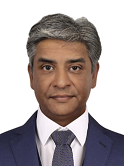
Title: Leveraging existing AM technologies with new materials for New Manufacturing Standards
Speaker Presentation
Mr. Rajesh Mrithyunjayan
Vice President 3D Products & Solutions at Monotech Systems Ltd., India
Abstract
Monotech Systems Ltd, a company with a 25-year history, initially specializing in 2D printing solutions for the Indian industry, diversified into 3D printing solutions eight years ago. Under the brand 3D Monotech, the company has successfully introduced a range of OEM 3D printers, catering to diverse needs from low-end polymer solutions to high-end metal printers. These 3D printing solutions have garnered attention and adoption from various universities, industries, and government establishments.
The field of Additive Manufacturing (AM) originated in the 1980s, primarily focusing on validation and functional prototyping applications. In the last decade, the landscape of AM has undergone a transformative shift due to the introduction of new materials and technologies. This evolution has extended the utilization of AM in manufacturing processes and the production of end-use parts, encompassing polymers, metals, and ceramics. This widespread application has notably benefited sectors such as aerospace, medical, Défense, and automotive.
However, the industry faces challenges related to low-volume utilization, resulting in elevated manufacturing costs. These costs often counteract the inherent benefits of AM when compared to conventional manufacturing methods. In response to these challenges, this abstract highlights Monotech Systems Ltd's exploration into the integration of innovative materials with established AM technologies.
With a focus on redefining manufacturing standards, the company leverages the capabilities of existing AM processes. This study delves into the potential for improved efficiency, sustainability, and product quality through the strategic incorporation of novel materials. Over the past two years, Monotech has specifically dedicated efforts to develop special 2D materials for infusion into polymers, contributing to the advancement of AM and addressing challenges within the industry.
Biography
Rajesh Mrithyunjayan is the “ Vice President 3D Products & Solutions" for Monotech Systems Ltd. based out of Chennai . Core Responsibility : Building and Managing the 3D Division of Monotech, which consists of 1) 3D Monotech - Involved in sales and service of 3D Printers & 3D Scanners sales 2) Metamorph 3D - Involved in Providing 3D Printed Parts, 3D Scanning, Reverse Engineering and 3D Design for Govt/Public/Private industries and Research Institutions 3) Metaform 3D - Involved in 3D Printer and 3D Scanner R&D and manufacturing of Make in India Equipments. • Total of 25 years experience in Industrial equipment and Capital Equipment sales. • Total of 12+ Years + experience in 3D Printer Sales. • Total of 8+ years Experience in Business Development of 3D Printing Solutions. Key Highlights in 3D Printing Business :- 1. 3D Printing Business : 12 years of Exposure in global 3d printing technologies. 2. OEM’s : Developed and maintained strong Business ties for Monotech with Leading 3d printer brands like 3D Systems , Bigrep, Markforged, W2P , Procusini , 3devo , Thor, Meltio, Rangevision, XJet 3. Global Experience : Traveled to various expos & OEM facilities in Europe ( Germany , Italy , Austria, Spain ), US , Asia , China etc .. And developed a good understanding of various 3d printing technologies through interaction with manufacturers. Attended OEM workshops and training sessions w.r.t applications and ‘Go to Market’ strategy. 4. Application Experience : Carried out Research in Casting Industries w.r.t 3D Printing suitability. Successfully sold Wax 3d printers in Investment casting industries. Replaced Traditional patterns with 3d printed patterns in the large OEMS and sand-casting industry. 5. Technical Knowledge : Have exposure to all 3d printing technologies in plastic, Wax and metal applications. Have OEM training on 3d printing technologies and applications. : Have been invited and participated in symposiums and Events pan india organised by various IIT’s and other recognised universities and presented about Additive Manfacturing with Polymers, wax, metals and ceramics. 6. R&D - Setup in-house R&D facility within 3D Monotech and have developed commercial 3D Photogrammetry system and Metaform 3D Printer which is used for inhouse and research purposes with large build platform size. - Working on Composite Materials for 3D Printing for End use parts in polymers to replace metals in manufacturing techniques - Working on Ceramic 3d printing for dental and medical implant applications.
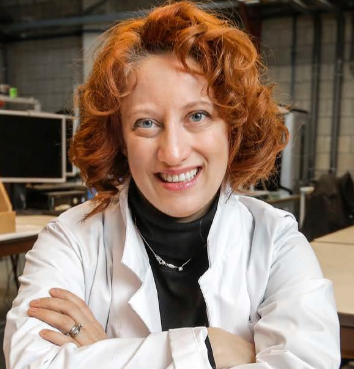
Title: Aerosol jet-based printing for in-vitro applications
Keynote Presentation
Prof. Eleonora Ferraris
Professor at KU Leuven, Belgium
Abstract
In vitro platforms, such as lab-on-chip, tissue-on-chip, 3D cell culturing, etc. find applications in multiple domains (personalized medicine, tissue engineering, pharmaceutical studies, in vitro diagnostic, etc.). These platforms are usually conceived as a multilayer/multifunctional 3D devices integrating, in the order, a substrate, a microfluidic layer, an electrical interface and a biological scaffold. Fabrication is possibly succeeded by cell culturing with patient derived cells to reach personalized solutions.
Manufacturing of such devices requires the use of advanced technologies with functional integration and multimaterial capabilities. In this context, it is believed that aerosol jet-based printing (AJP) can be considered as the next key enabling technology to reach this purpose. AJP stands out for its capability to print a wide variety of materials, including electrically conductive inks, biological solutions, hydrogels, UV resins, etc., at micrometric resolution and on free-from substrates (e.g. flexible, rigid, flat and/or 3D shaped supports). It has proven ability in the domain of printed electronics and its application as 3D printing technology for 3D bioelectronics interfaces and (collagen) scaffolds is under investigation.
In this contribution, recent trends in aerosol jet printing are reviewed and its potential as enabling technology to develop integrated in vitro devices for diagnostic and personalized treatments is critically discussed. The focus is given on the work conducted at the KU Leuven, Advanced Manufacturing Laboratory (AML), with respect to 3D microstructuring, bioelectrical applications along with biocompatibility study of commercial inks, and high-resolution collagen AJ printing.
Biography
Eleonora Ferraris obtained a Master degree in Industrial Engineering from Politecnico di Milano in 2002, and she received a PhD degree in Material Engineering from the University Tor Vergata of Rome in 2006. In 2008, she was granted with a Marie Curie Post-Doctoral fellowship, hosted by the KU Leuven. She currently is a professor at the Faculty of Engineering Technology, KU Leuven, Belgium. Since 2013, she is active in additive manufacturing with research focus on nozzle based additive manufacturing, including hot material extrusion and aerosol jet printing for smart applications and regenerative medicine.
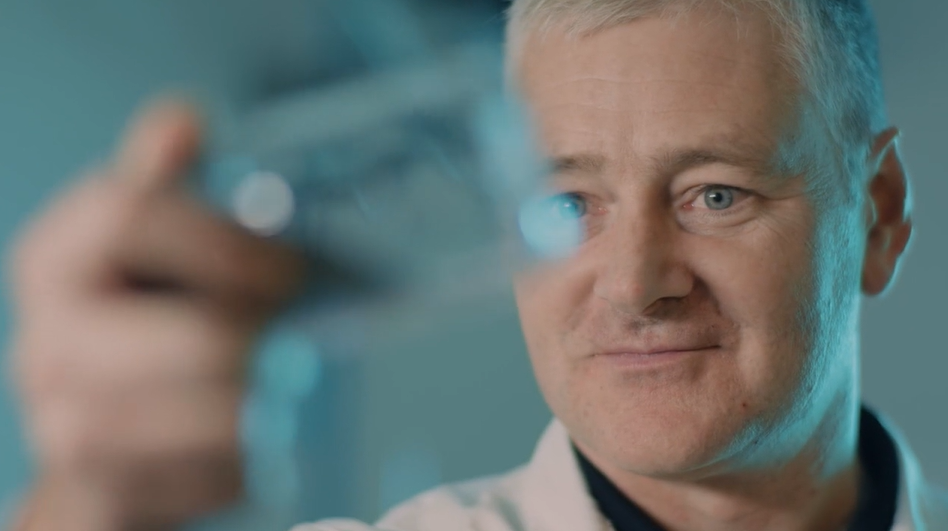
Title: New Gas Atomised Metal Alloy Powders for Additive Manufacturing (AM)
Speaker Presentation
Mr. Paul A. Davies
Sandvik Additive Manufacturing, United Kingdom
Abstract
Metal powders manufactured by inert gas atomization, provide consistent quality & high performance raw materials for many of the different additive manufacturing processes, especially Powder Bed Fusion. New alloys have been developed in recent years for many different industries, including Super Austenitic Stainless Steels specifically designed for the marine, oil & gas and chemical industries with material properties that include high toughness & corrosion resistance, as well as high-temperature creep resistance. And Super Duplex 2507 stainless steel, printed by Powder Bed Fusion – Laser Beam (PBF-LB) and heat treated to create superior corrosion resistance & mechanical performance compared to that of wrought material. Maraging steels, including 18NI300 and the ultra-high hardness grade (MAR-60) benefit from in-situ heat treatment when deposited by Direct Energy Deposition (DED) and are therefore particularly suited to repair and refurbishment of damaged or worn components. Cobalt free maraging steels provide a sustainable solution with equivalent performance in terms of hardness to that of established materials, such as 18NI300/M300, typically used for mould tooling applications. A new Hot Work Tool (HWT) steel has been developed, with a modified composition compared to H13 for mould tooling & aluminium die casting applications, that prints without cracking without powder bed heating. New metal powder product developments presented include extending the range of copper alloys for PBF-LB, relevant to space technology specifically rocket nozzle applications, based on Cu-Cr-Zr (C18150) and more recently Cu-Cr-Nb, specifically GRcop42 as developed by NASA.
Biography
Paul Davies studied physics and completed a PHD in Material Science at Swansea University, followed by a post-doc. research related to the nuclear industry. Five years’ experience in the steel industry working in the automotive and defence sectors. Employed by Sandvik for more than 16 years in a technical & marketing sales capacity, specialising in the fields of Metal Injection Moulding and Additive Manufacturing. Currently hold a strategic marketing & technical solutions position at Sandvik Additive Manufacturing. Committee member of EPMA MIM & AM sectors group. And represent the British Standards Institute at various ISO committees in Additive Manufacturing.
“ Will be updated soon...”
+91 9491 456 452
Door No.200, Immidhihalli Main Road, Whitefield-560066, Bangalore, India
About Us
Global Scientific Guild organizes conferences and webinars to promote quality research and real world impact in an atmosphere of true international co-operation between scientists, doctors, professors, practitioners, engineers and industry by bringing together the world class renowned personalities to discuss the latest developments and innovations at one common platform.